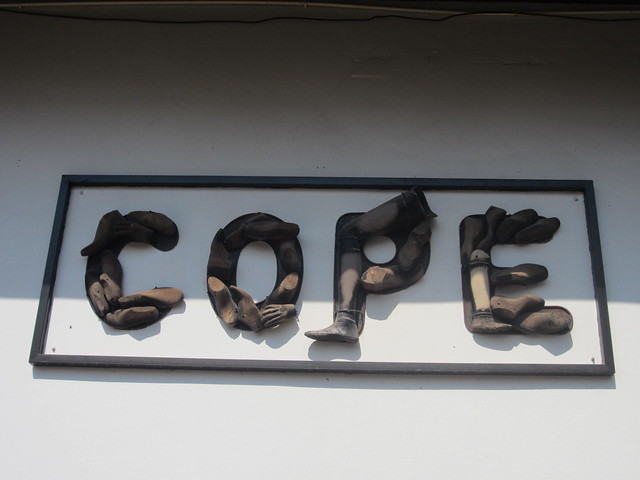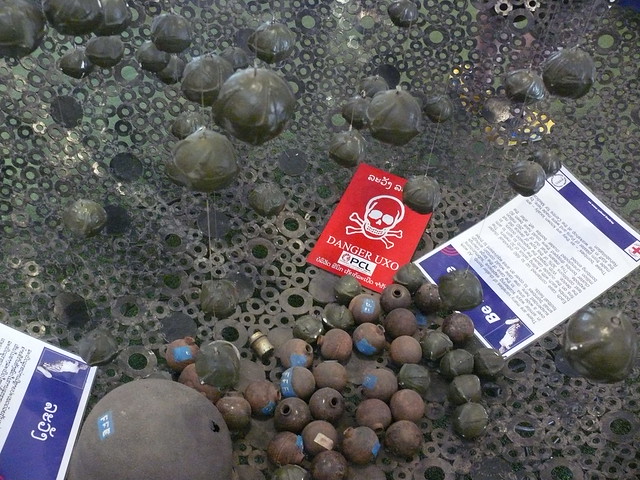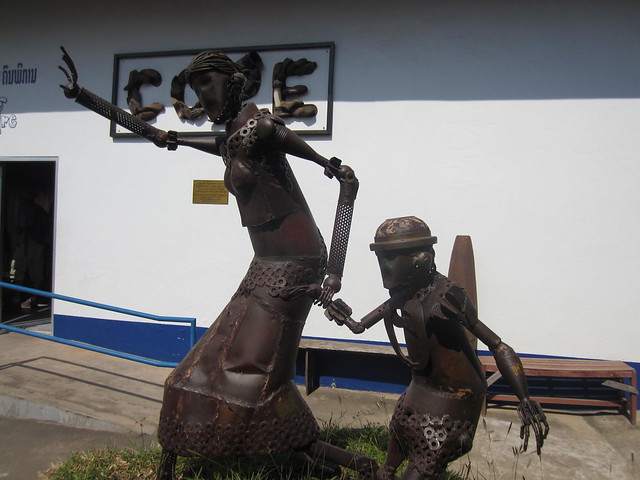Did you know that Laos is the most heavily bombed country in the world per capita, and it wasn't even in the Vietnam war having been officially acknowledged as neutral by an International Agreement signed in 1962 by 15 countries. A neutrality that was not respected for long. During the Vietnam war part of the supply route for the Viet Cong veered into eastern Laos. A route that was heavily bombed by the US attempting to cut into supplies. In addition many planes dropped their bombs on their way back to base rather than go though the process of safely removing them from the planes upon return. What does that mean? It means that there are thousands of bombs that were dropped in Laos that did not explode. Unexploded Ordinances are a huge problem in the country, and somewhere around 25% of villages in the country have to deal with them. There are two main organizations trying to deal with this situation: UXO Lao works to educate communities, identify bombs and safely decommission them. The COPE center is the only organization in the country that work to provide prosthetics and rehabilitation to victims disabled by unexpected bomb explosions. They are also working to spread the message to the wider community, starting with the COPE visitor centre in a small building at the hospital they work out of.
I spent my last day in Vientiane at the center, learning a bit more about the situation and what organizations are doing to address it. Housed in a room that amounts to a large shed, the fact that I spent over 2 hours there tells you what a good job they have done of building a place that not only is informative but also evocative. The movies they will play on request provide multiple perspectives of the problem...and the current solutions. (You can watch one here.) The situation really hit home for me, perhaps because I knew my mom was working on the other side of the Vietnam war, providing care for soldiers that were injured too badly to make it back to the US. Perhaps because I know that except for chance it could have been my father involved in the process. Perhaps because of the realization that this is something that happened over 40 years ago but is still affecting life daily for people of all ages. The untold repercussions of war.
However, there was more than that that impressed me about the center. It was a message of hope. The feeling that they are making a difference - without having to import solutions from other countries. They are using local technicians working with local materials to custom make prosthetics for individuals. They ensure that they do not waste material, reusing scraps to create assistive devices for some; melting it back down to add in to the resources available. In fact the organization made such an impression on my that I made a donation when I got home to help them fund their aim of provided the resources and therapy that individuals with disabilities need despite finances.
If you want to educate yourself more:
COPE center website
UXO Lao website
I spent my last day in Vientiane at the center, learning a bit more about the situation and what organizations are doing to address it. Housed in a room that amounts to a large shed, the fact that I spent over 2 hours there tells you what a good job they have done of building a place that not only is informative but also evocative. The movies they will play on request provide multiple perspectives of the problem...and the current solutions. (You can watch one here.) The situation really hit home for me, perhaps because I knew my mom was working on the other side of the Vietnam war, providing care for soldiers that were injured too badly to make it back to the US. Perhaps because I know that except for chance it could have been my father involved in the process. Perhaps because of the realization that this is something that happened over 40 years ago but is still affecting life daily for people of all ages. The untold repercussions of war.
If you want to educate yourself more:
COPE center website
UXO Lao website



